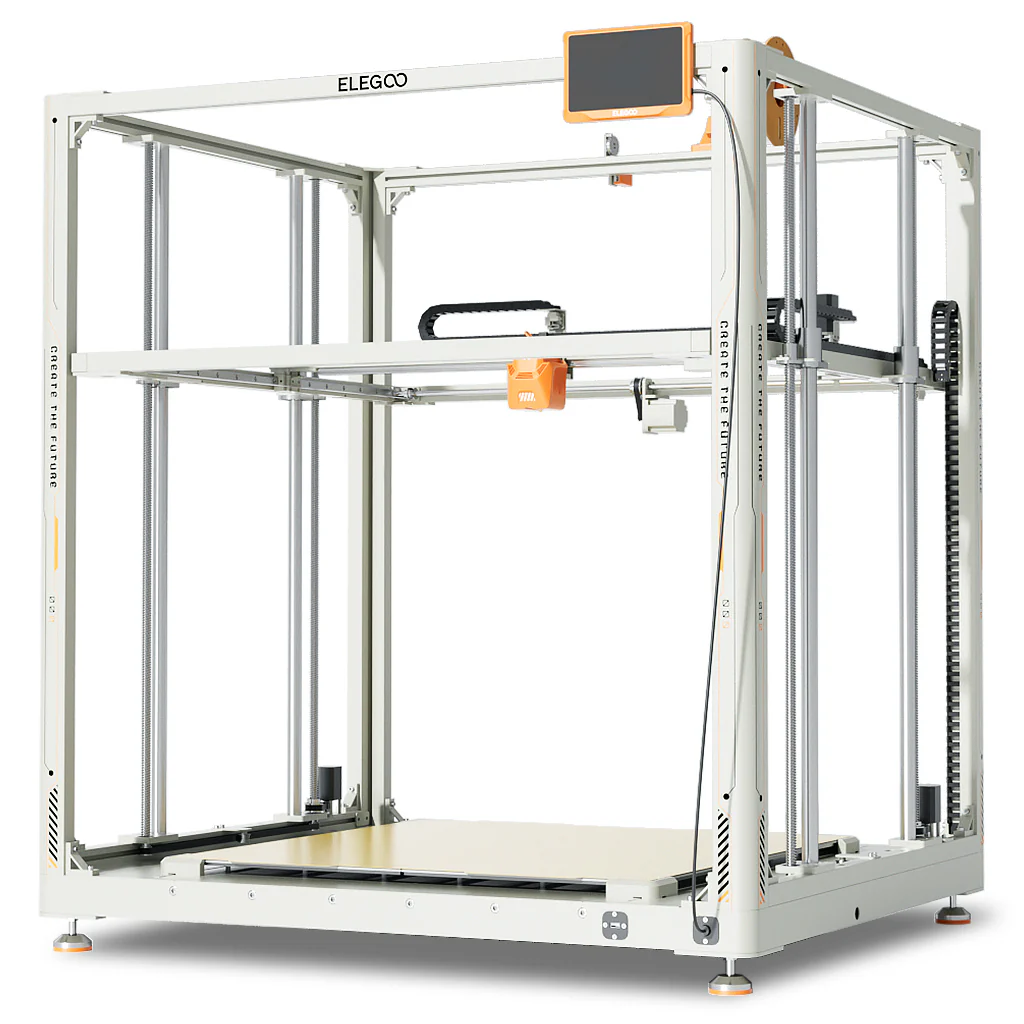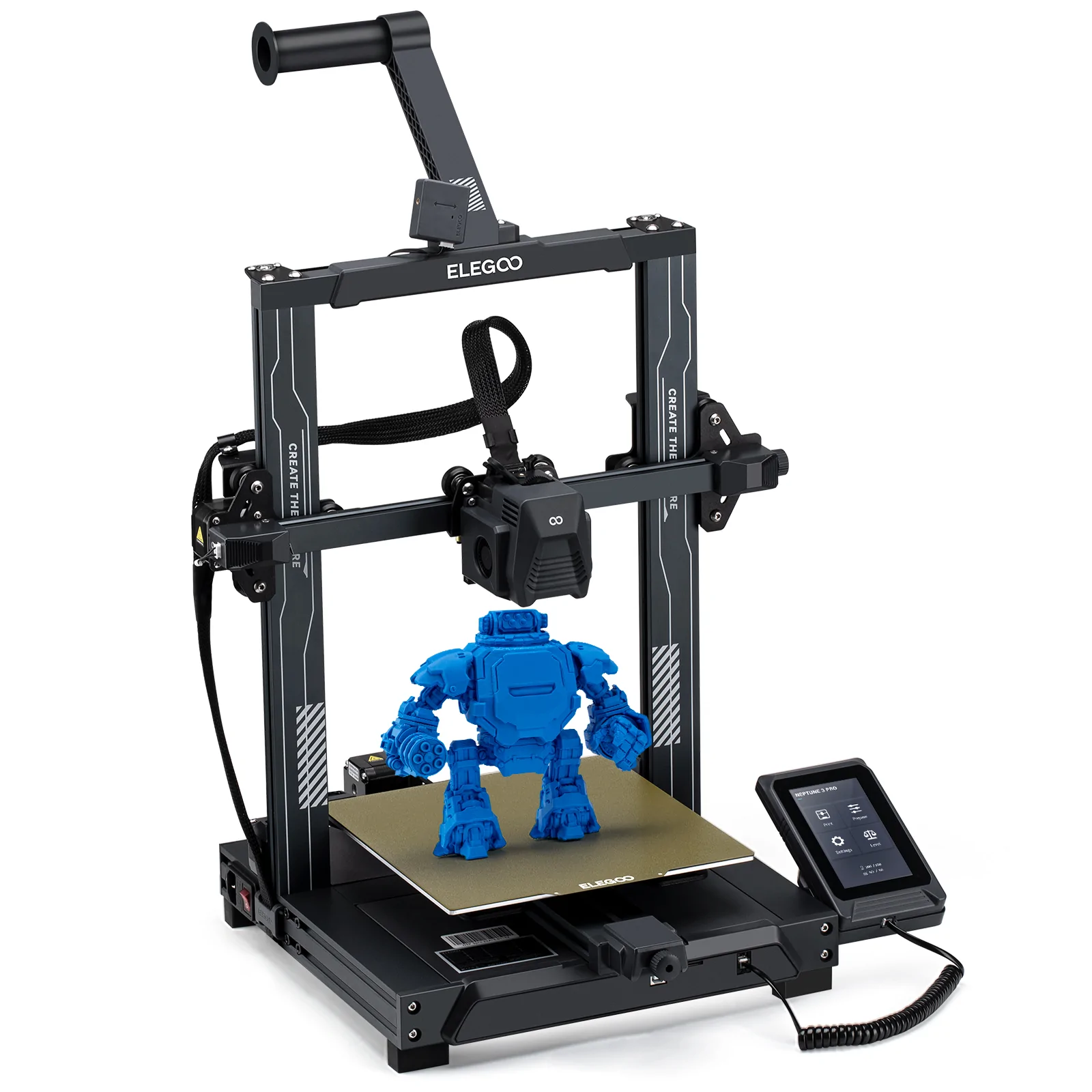Compare Orange Storm Giga vs Neptune 3 PRO
Comparison between the best 3D printers
Choose the best 3D printer at the best price. The cheapest 3D printers are here.
Buy a 3D printer here with 3D Fila.
 |
 |
|
| Model | Orange Storm Giga[BUY Orange Storm Giga] |
Neptune 3 PRO |
| Printing Material | Filament | Filament |
| Buy Filament for Elegoo Orange Storm Giga | Buy Filament forElegoo Neptune 3 PRO | |
| Estimated price | $2500,00 | $230,00 |
| Manufacturer | Elegoo | Elegoo |
| Release Year | 2024 | 2022 |
| Print Volume [mm] | 800x800x1000 | 225x225x280 |
| Printer Size [mm] | 1000x1000x1200 | 445x515x475 |
| Weight [kg] | 136 | 8,1 |
| Power Loss Recovery | YES | YES |
| Enclosed printer | NO | NO |
| Bed Leveling | Automatic | Automatic |
| Filament End Sensor | YES | YES |
| Bed type | Heated | Heated |
| Power supply system | Direct Drive | Direct Drive |
| Standard nozzle | 0,4 | 0,4 |
| Maximum Nozzle Temperature [°C] | 300 | 260 |
| Maximum Bed Temperature [°C] | 90 | 100 |
| Maximum printing speed [mm/s] | 300 | 80 |
| Filament holder | YES | YES |
| Camera for supervision | NO | NO |
| Recommended filaments | PLA, ABS< PETG, TPU | PLA, PETG, Tritan, Flex, ABS |
| Recommended slicers | Elegoo Cura | Cura, Simplify, Slic3r, IdeaMaker e outros |
| Maximum Resolution [mm] | 0,1 | 0,1 |
| Processor | ||
| Display | Touchscreen 7'' | Display touchscreen 4,3'' |
| Power Supply | 250 | |
| Connectivity | USB, LAN, Wi-Fi | |
| Operating systems | Windows, Linux e Macbook | Windows, Mac, Linux |
| Date of registration in the system | 2024-10-09 | 2023-03-02 |
| Release date | 2024 | 2022 |
| Extra features | The Elegoo Orange Storm Giga stands out for its huge print volume of 800 x 800 x 1000 mm and its modular heated bed system with four independent zones, ensuring energy efficiency. It supports printing with multiple nozzles, allows print recovery after power failures and uses Klipper firmware, optimizing speed and quality. The portable 7-inch touchscreen and USB, Wi-Fi and LAN connectivity make operation more accessible and versatile. | The Elegoo Neptune 3 Pro printer stands out for its easy assembly and automatic bed leveling, ideal for different levels of users. Equipped with a direct-drive extruder and dual gears, it offers excellent adhesion to slippery materials such as TPU. It incorporates dual screws on the Z-axis, ensuring stable prints, and features an integrated task light for improved visibility. With a PEI-coated build plate and a detachable touchscreen, it combines functionality and convenience. The printer also features an efficient cooling system, filament sensor and a simplified user interface. |
| Support for multiple colors and materials (AMS and CFS) | NO | NO |
Notes * |
||
| Cost-benefit | 6 / 10 | 7 / 10 |
| Hardware | 3.6 / 10 | 2.8 / 10 |
| Tela | . | . |
| Print volume | 10 / 10 | 3 / 10 |
| Performance | 3 / 10 | 0 / 10 |
| [BUY Orange Storm Giga] |
Conclusion |
| In comparing the Elegoo Orange Storm Giga and the Neptune 3 Pro, several key differences and similarities emerge that can guide potential buyers in choosing the best 3D printer for their needs. The **Orange Storm Giga** excels in dimensions, boasting a significantly larger print volume, making it ideal for users who need to produce larger models. Its robust build and more advanced features, such as higher maximum nozzle temperature and print speed, align it with professional and industrial requirements. The extensive connectivity options and modular heated bed also enhance its versatility and operational efficiency. However, this level of capability comes at a considerably higher price, positioning it as a more significant investment. Conversely, the **Neptune 3 Pro** is more accessible in terms of affordability and is designed with ease of use in mind, making it suitable for hobbyists and beginners. Its automatic bed leveling and straightforward assembly cater to those who may not have extensive experience with 3D printing. While it lacks the advanced specifications of the Giga, it compensates with reliable performance for moderately sized projects and integrates essential features like a direct drive extruder and dual Z-screws for stability. Both printers share important features, such as automatic bed leveling and power loss recovery, enhancing their reliability. Ultimately, the choice between the two will depend on the user's specific needs – whether they prioritize a large print volume and high-speed printing for more substantial projects, or if they seek a user-friendly and budget-friendly printer for smaller creations. Thus, while both offer solid performance and value, their target audiences and applications diverge significantly. |

